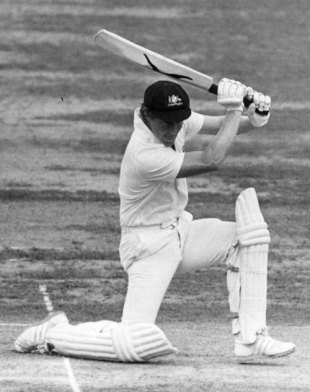Samir Chopra
I realized, with a little start of surprise, as this World Cup went on, that I have absolutely no idea of what the Indian batting order, is, or has been, for a while
So the IPL's charms haven't worked on me as yet
Ryan has written a book as only a fan of Hughes the batsman could, as one who struggles to understand why the glory of a an epic innings is not consonant with the considerably less glamorous facts of the politics of cricket
|
|
 |
Sure, it was interesting to note Delhi players running up to McGrath and Asif to congratulate them on a wicket
|
|
 |
Given the large number of responses to my previous post , I thought it only fair that I write some sort of response
- You're just drawing on the benefits of hindsight. Why didn't you say this before? Actually, I did. On the third day of the Test before tea-time, I wrote in Eye-on-Cricket, "I'm glad that it has rained a bit at the Basin Reserve. And I hope someone has pointed out to MS Dhoni that it'll get darker an hour sooner there. For hopefully, this lunatic suggestion going around that India should just keep on batting, and batting and batting will die the quick death it deserves. Get the lead to 500 and declare, and give yourself time and plenty of runs on the board to set attacking fields and get the 20 wickets to win. Why imagine the Basin Reserve will remain sunny and dry till the end of the fifth day? And if you don't think you can win despite setting a target of 500 I'd suggest a hunt for the proverbial chullu-bhar". I followed this up with a post on the fourth day as well. I had hoped for a declaration on the third day. When India batted on, I gave them the benefit of the doubt, thinking that NZ might not have batted anyway, given the poor light. Perhaps they could declare overnight? But I also thought, that at most, please at most, don't bat more than an hour. In the end, India batted on for some 90 minutes. I had a bad feeling then, given the clouds hovering around over the Basin Reserve and given the light situation. Just a reminder, once again: India was up by 231 runs with nine wickets in hand at the end of the second day.
When all the various defences about Dhoni's canny captaincy, India's dismal overseas records, the lack of a series win in 40 years in New Zealand, and the apparent incapacity of captains to plan for the weather are done with, something is still a bit

| ||
Photo galleries have always been popular among readers, and audio has been an integral part of the site for nearly three years. We have now combined the two to produce audio-visual stories
In this post, I'd like to be self-indulgent, and talk about an experience of mine that led me to partially understand how the state of mind of a batsman could change in the course of an innings, from utter diffidence to one of supreme confidence.
When the idea of night Tests was first mooted, my initial reaction was one of resistance
|
|
 |
Why anyone would imagine that a mere cricket team would get in the way of their fascist ideology is beyond me
|
|
 |
